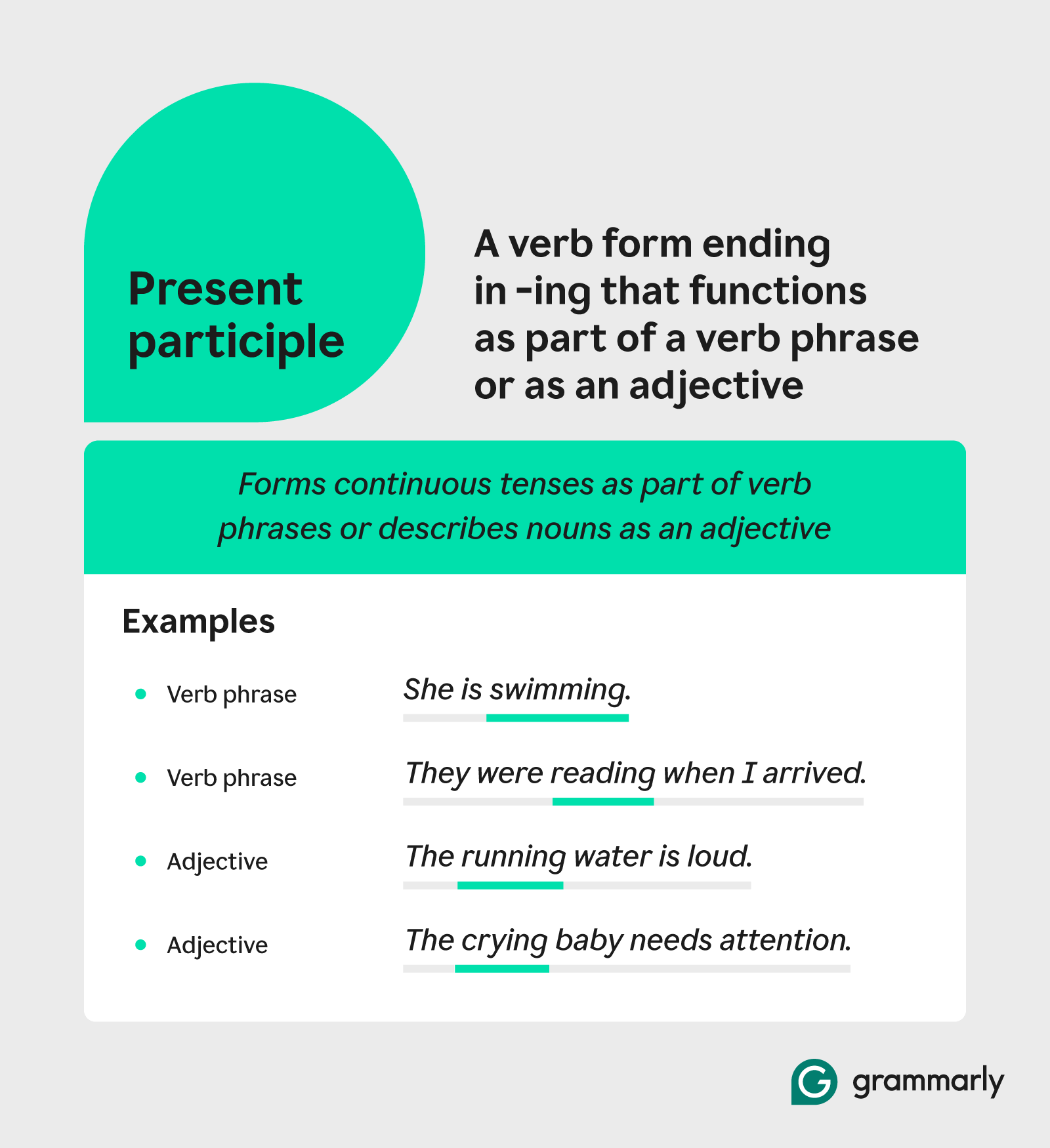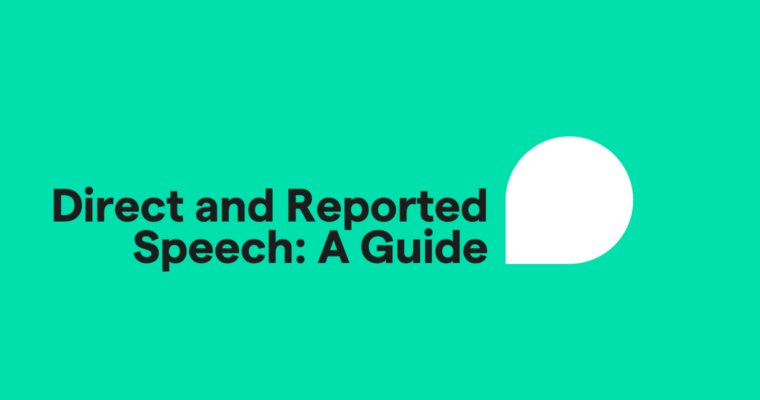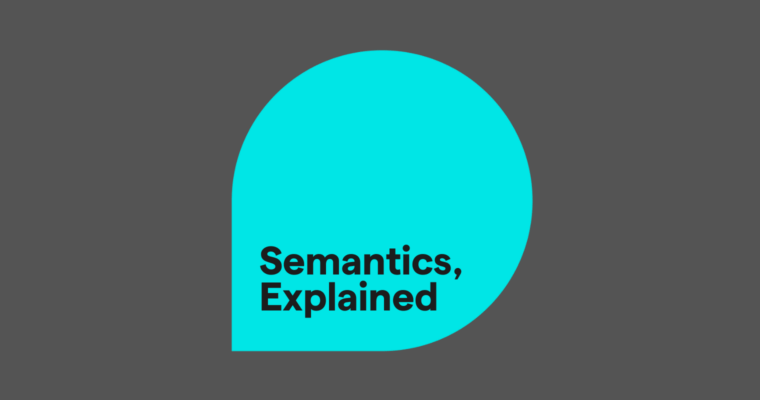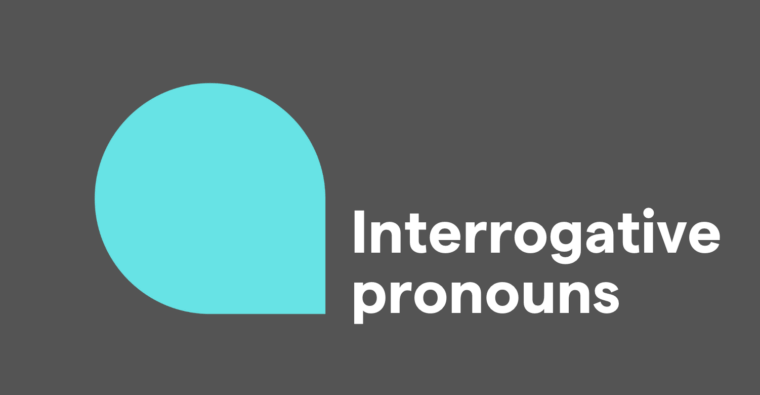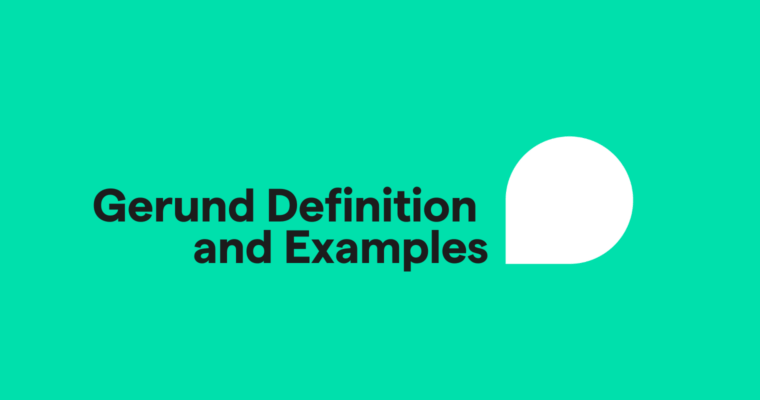
Key takeaways:
- Gerunds are verbs ending in -ing that act as nouns in a sentence. They take on roles like subject, object, or complement.
- Identify gerunds by checking if the -ing word functions as a noun, not a verb.
- Gerund phrases include a gerund and its modifiers or objects, working together as a noun.
They bonded over their shared love of hiking.
I hope to set a new record in swimming.
What do these two sentences have in common?
They both end in verbs, but those verbs aren’t just verbs. They’re gerunds. Think about what these verbs are doing—they aren’t describing the action in these sentences like verbs usually do. That’s because gerunds don’t describe action—they act as nouns.
Gerunds are useful because they let us discuss actions more abstractly, framing them as causes, hobbies, or objects of action.
Table of contents
What is a gerund, and what is its function?
Gerunds vs. the present participle
How to identify gerunds in a sentence
What is a gerund, and what is its function?
A gerund (pronounced JER-und) is a verb that ends in -ing and acts as a noun. By that, we mean that a verb—the word that describes the action happening, like biking, thinking, running, or speaking—becomes a thing, a concept that can now be the sentence’s subject, direct object, indirect object, or the object of a preposition.
While it remains a verb within the sentence, its role shifts from describing the action to being a focal point.
Here are two examples of sentences that contain gerunds:
- Eating is an involved production for food bloggers like Shoshanna.
- Fazal turned off his phone and shut the door so he could focus on studying.
Gerunds vs. the present participle
While gerunds end in -ing and so do present participles, gerunds use a verb as a noun, while a participial verb acts as a verb or adjective.
When you see a word ending in -ing, you’ll need to determine whether it’s a gerund or present participle by examining its function in the sentence:
- A gerund is a verb form that functions as a noun.
- The present participle is a verb form used in continuous tenses or as an adjective.
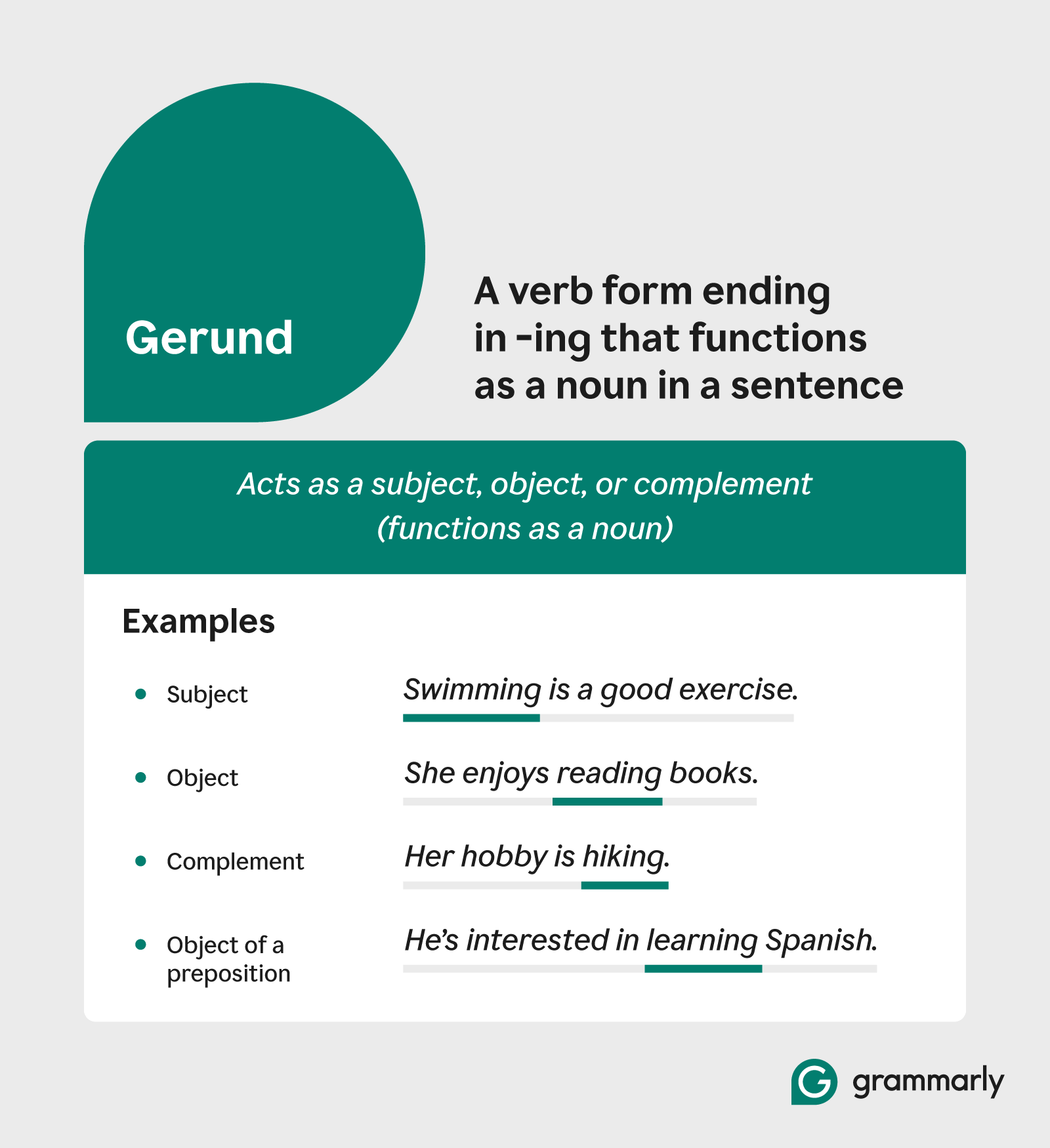
Here are more examples of the difference between gerunds and the present participle:
Gerund vs. present participle examples
| Gerund | Present participle |
| She is obsessed with swimming. | She’s swimming. |
| The movie left me wondering. | I’m wondering … |
| I’m more fond of walking to school. | I was walking to school. |
Types of gerunds
There are six types of gerunds, each serving a distinct role within a sentence:
- Subject: The gerund acts as the subject of the sentence. Example: Biking is my newest hobby.
- Subject complement: The gerund follows a linking verb and renames or describes the subject. Example: My preferred commuting method is biking.
- Direct object: The gerund receives the action of the verb directly. Example: I love biking.
- Indirect object: The gerund is the recipient of the action, typically appearing after verbs that express giving or showing. Example: My sister gave biking a try.
- Object complement: The gerund modifies or complements the direct object, describing what the action results in. Example: I see myself biking every day.
- Object of a preposition: The gerund follows a preposition and acts as its object. Example: I blocked out a few hours this Sunday for biking.
Gerunds vs. infinitives
Gerunds aren’t the only kind of verbs that act as nouns; this is also true for infinitives.
An infinitive combines the word to with a root verb. You can use an infinitive in two ways: as a noun that communicates a single concept and as an adjective to describe a noun within the sentence. Here are a few examples:
Infinitive examples
| Sentence | Infinitive | Function |
| I brought us some lemonade to drink with lunch. | To drink | Adjective |
| To err is human. | To err | Noun |
| I hope there are magazines to read in the waiting room. | To read | Adjective |
| We love to travel, but we couldn’t afford it last year. | To travel | Noun |
As you can see, infinitives are similar to gerunds but aren’t exactly the same. In a sentence where the infinitive acts as a noun, you can often replace it with a gerund without changing the meaning. However, the reverse isn’t always true—especially when the gerund is the object of a preposition. For example, consider the incorrect sentence: “I blocked out a few hours this Sunday for to bike.”
You could remove the preposition in this sentence (“for”), and it would make sense: “I blocked out a few hours this Sunday to bike.” But if you do this, you no longer have a prepositional phrase.
In contrast, some transitive verbs can work only with an infinitive. Take a look at these examples:
Correct and incorrect use of infinitives
| Example | Infinitive use |
| I plan to dance. | Infinitive only |
| I plan dancing. | Incorrect |
| They’ll decide to stay. | Infinitive only |
| They’ll decide staying. | Incorrect |
In summary, both gerunds and infinitives can function as nouns. However, their usage often depends on the verb and the context, particularly whether the action is abstract or concrete.
How to identify gerunds in a sentence
Identifying gerunds in a sentence is easier once you understand their key characteristics.
- Look for a verb ending in -ing: A gerund always ends in -ing. However, not all words ending in -ing are gerunds.
- Determine if the -ing word acts as a noun: Gerunds function as nouns in a sentence. If the -ing word serves as a subject, object, or complement, it is a gerund.
- Distinguish gerunds from present participles: Present participles also end in -ing, but the present participle functions as part of verb phrases or as adjectives, while gerunds always act as nouns. The context of the sentence will help you determine if you’re looking at a gerund or participle.
- Check for gerund phrases: A gerund phrase includes a gerund and any modifiers or objects. This entire phrase functions as a noun in the sentence.
Gerund phrases
A gerund phrase contains a gerund plus a modifier, an object, or both. Here are three examples of gerund phrases:
- Apologizing to them
- Underground exploring
- Running with scissors
Like a gerund, a gerund phrase acts as a noun in a sentence. Take a look at how these gerund phrases work in that context:
- Apologizing to them is important to me.
- My brother enjoys underground exploring with his friends.
- I don’t advise running with scissors at this time (or ever).
Phrasal verbs
You can also use gerunds with phrasal verbs, which are two- or three-word phrases that combine a verb with an adverb or preposition to communicate a unique concept that can’t be expressed by either word alone. Common phrasal verbs include:
- Figure out
- Check into
- Take over
Here are a few sentences that demonstrate how phrasal verbs and gerunds can work together:
Example: Try as I might, I just can’t figure out programming.
Explanation: Figure out is the phrasal verb, and programming is the gerund acting as the verb’s direct object.
Example: I’m worried my mother-in-law will take over cooking when she arrives.
Explanation: Take over is the phrasal verb, and cooking is the gerund acting as the object of the phrasal verb.
Gerund and present participles exercise
Here’s a quick exercise to solidify your understanding:
Identify the gerunds and/or present participles (if any) in these sentences:
Gerund and present participle identification exercise
| Sentence | Answer |
| Hiking in the mountains is exhilarating. | Gerund (“hiking” is the subject) |
| The dog was barking loudly. | Present participle (“barking” is part of the verb phrase “was barking”) |
| She is interested in learning new languages. | Gerund (“learning” is the object of the preposition “in”) |
| The singing birds woke me up. | Present participle (“singing” acts as an adjective) |
| I appreciate your helping me. | Gerund (“helping” is the object of “your”) |
How gerunds can improve your sentences
Gerunds are verbs disguised as nouns, allowing you to add clarity and variety to your sentences. By recognizing their role and practicing their use, you can improve your writing and comprehension. With some practice, you’ll unlock the power of the “-ing” form.
Writing is easy with Grammarly
Pop quiz time! What’s the gerund in the header above?
If you said “writing,” you’re correct.
When you’re confident that your writing is free of grammatical errors, digging deeper and tackling bigger ideas in your work doesn’t seem quite as daunting. Grammarly helps by catching missed grammatical mistakes and offering suggestions, empowering you to refine your first draft into polished, publishable writing.
Gerund FAQs
Below are answers to frequently asked questions about gerunds and their role in grammar and writing.
How do you create a gerund?
A gerund is formed by adding “-ing” to the base form of a verb. While this is the same form as the present participle, it’s crucial to remember that not every verb ending in “-ing” is a gerund.
- Gerund example: Swimming is my favorite hobby.
- Present participle example: She is swimming in the lake.
What is the difference between a verb and a gerund?
A verb expresses an action, occurrence, or state of being and functions as the main part of the predicate in a sentence. A gerund is simply a participle that ends in “-ing” and functions as a noun. While verbs describe what the subject is doing or being, gerunds use that same action word as a subject, object, or complement.
For example, in “She runs every morning,” “runs” is a verb. But in “Running is her favorite exercise,” “running” is a gerund acting as the subject.
What are the different kinds of gerunds?
Gerunds can play several different roles within a sentence:
- Subject
- Direct object
- Indirect object
- Object of a preposition
- Subject complement
- Object complement
What are the 3 rules of gerunds?
The three main rules of gerunds are:
- Gerunds always end in “-ing” and function as nouns in sentences, taking positions where nouns would typically appear.
- Gerunds must be preceded by possessive nouns or pronouns when referring to someone performing the action (e.g., “I appreciate your helping” rather than “I appreciate you helping”).
- Gerunds can take objects and be modified by adverbs, maintaining some verbal qualities (e.g., “Quickly finishing the assignment impressed the teacher”).
What is a gerund phrase, and how is it different from a gerund?
A gerund phrase is a gerund combined with other words, such as objects or modifiers, that complete its meaning, and together they function as a noun in a sentence. For example, “Swimming in the cold lake every morning” is a gerund phrase, while “swimming” is just a gerund.
The main difference is that a gerund is a single word, while a gerund phrase is a group of words centered around the gerund, acting as a noun.
How do parts of speech change in sentences?
Gerunds aren’t the only instance where a word (or group of words) plays a role typically taken on by another type of word. For example, an adverbial clause is a clause that functions as an adverb. An adjective phrase is a phrase that describes a noun the way an adjective typically does.

